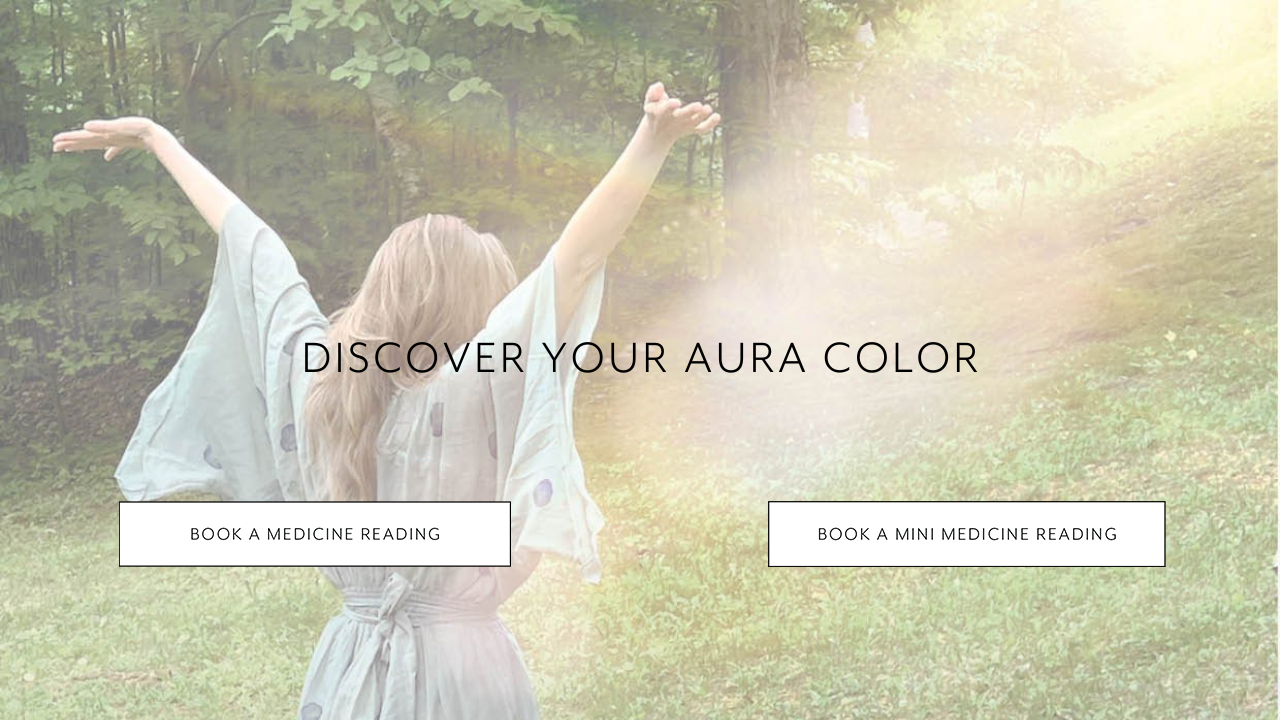THE AURA DEMYSTIFIED
You know that feeling when you are about to turn a corner and somehow you feel that you’ll bump into someone around the bend if you don’t move? Or when you feel someone staring at you without even seeing them? When someone walks into an already occupied room and the mood of the original group changes? All of this is “sensing energy.” We are so much more than flesh, bones, and mind. We are infinitely connected to the world around us. Just as we each have a physical body, we also have an energetic body, or an aura.
The concept of auras appears in some of our earliest cultures. The word aura originates from the ancient Greek language, meaning “breath, wind, or breeze.” Yogis refer to it as the pranamaya kosha. In Sanskrit, the word prana is used to describe both breath and energy. In China, the aura is referred to as chi, and in Japan, ki. Early Christian and Egyptian paintings depict halos around the heads of figures, and Hildegard von Bingen, a first-century healer, nun, and prophetess, spoke of seeing light around people.
As humankind shifted from a matriarchal society to a patriarchal society, the aura and its recording were forgotten in the West. Aside from a brief revival by the Theosophical Society around 1910, belief in auras was limited until the New Age movement of the 1970s. Through the years, skeptics have devised countless tests trying to trip up those who claim they can see auras, to “prove” that the human energy field doesn’t exist. Truth be told, if I were to take some of these tests, I would probably fail to see the aura too. Trying to prove whether or not auras are real would be as difficult as trying to prove what happens after we die or how we fall in love—it is among the great mysteries in life and cannot be completely logically defined.
☾
I first realized that not everyone could see auras when I was twelve years old. There I was, fully loaded with freckles, a funny haircut, and multicolored elastic bands on my braces, talking to my friends about the shapes and colors around people and what they meant. My friends looked at me like I was crazy, and I realized that they couldn’t see what I saw. The awkwardness and embarrassment of that experience led me, for a long time, to discuss auras only with those closest to me. As I’ve aged, I’ve learned to release this fear and to share my unique gifts.
I’ve also learned to articulate what I see in people’s auras to help them uncover possible obstacles or hidden talents and gifts in their own lives, so that they may live in balance, authenticity, and joy. This offering, followed by a multi-sensory healing ceremony, is called a Medicine Reading; it’s the modality I invented after fifteen years on my own powerful spiritual journey.
Sometimes people who cannot see auras want to learn how to see them. My answer is that we are all able to sense energy one way or another. Whether we do so through scent, sight, sound, feeling, or even taste is dependent on our individual gifts. To nurture and cultivate your own gifts, here are a few things that can help put you in a more receptive state of mind:
1. Get enough sleep.
2. Spend less time looking at a screen and more time looking at nature.
3. Meditate consistently.
4. Practice trataka, a candle meditation that yogis practice to cleanse the eyes.
5. Eat healthfully and avoid toxins.
6. Spend time alone.
I am still not sure if you can learn how to see auras, but after having cultivated a receptive state of mind, here’s how you can try. Once you are ready, have a friend stand in front of a white wall in a well-lit room. Stand facing them, close your eyes, and take three deep breaths. Open your eyes and look at them, letting your vision blur a little bit. Be patient and the aura may reveal itself.
The first two questions I’m often asked are “What color is my aura?” and “What does that mean?” Most people have different colors in their auras and in varying amounts. Different colors and shapes in different places within the aura signify different things. Our moods can also shift the colors of our auras. For example, when someone is feeling very confident and open they will have a large, bright, multicolored aura. Someone who is feeling more withdrawn can have an almost single-colored aura that hugs closely to the body.
These color combinations make deciphering and properly translating auras a complex craft that requires spending a good amount of time speaking with and learning about each person. Ultimately, reading auras is like learning to speak an esoteric language with no one to teach you and no text to refer to. To decode this language is quite complicated, but for fun I will share with you the tip of the iceberg of what some of these colors mean to me.











